Warren Cantrell from 10rant.com is back with another fantastic Top 10 list! If you have a Top 10 list of your own to contribute, email me at eric@scene-stealers.com. Here’s Warren:
It’s a new year, and for many, a new opportunity to kick a habit or habits that have made life unforgivably miserable for the previous 12 months. For some, that might mean shedding a little excess tonnage, while for others it may mean a few less cocktails or cigarettes a week. There are a few of you out there that have something else stuck in your craw, and no amount of resolution-setting is going to make your insanity go away. I can sympathize, for I’m a pretty organized person with an admittedly established set of routines that I guard with a fair amount of jealous aggression. Things in my world live in designated places for deliberate reasons, and as such, my home and work spaces reflect a pretty rigid lifestyle that thrives on tidiness and order.
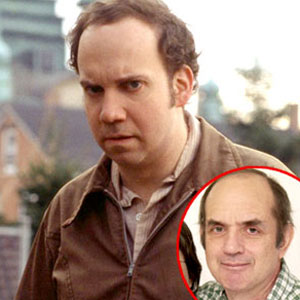 That said, I’ve let the laundry go a few too many days without a wash, and have been known to allow the carpets to go un-vacuumed from time to time. I don’t feel especially compassionate about hand-washing, and I’ve never caught myself touching things in a particular order on any kind of a consecutive basis. While I understand that just because I don’t compulsively scrub the skin off my palms or do a finger-dance on my way out the door that I might still get my O.C.D. (obsessive-compulsive disorder) card punched one day. Indeed, I feel that my mere dedication to cleanliness and organization sets me apart from genuine O.C. disorders. People with this condition (and there are a number of varieties and flavors) have testified to its sometimes suffocating effect on their lives, and their inability to function in normal social situations as a result of its effects. Though many people have found ways to cope with O.C.D. so they can lead normal, healthy lives, others suffer tremendously as a result, and consequently face a lot of challenges.
That said, I’ve let the laundry go a few too many days without a wash, and have been known to allow the carpets to go un-vacuumed from time to time. I don’t feel especially compassionate about hand-washing, and I’ve never caught myself touching things in a particular order on any kind of a consecutive basis. While I understand that just because I don’t compulsively scrub the skin off my palms or do a finger-dance on my way out the door that I might still get my O.C.D. (obsessive-compulsive disorder) card punched one day. Indeed, I feel that my mere dedication to cleanliness and organization sets me apart from genuine O.C. disorders. People with this condition (and there are a number of varieties and flavors) have testified to its sometimes suffocating effect on their lives, and their inability to function in normal social situations as a result of its effects. Though many people have found ways to cope with O.C.D. so they can lead normal, healthy lives, others suffer tremendously as a result, and consequently face a lot of challenges.
While you might not think it to be true, like most tragic human conditions, this one has found a comedic reinvention through the cinematic medium. Movies have taken note of this peculiar personality trait and crafted some of the most memorable characters in film history using its mold. Pictures that recognized O.C.D. throughout the years did so with characters suffering through varying degrees of severity, and reflected a condition that takes different forms for different people. While some displayed the textbook signs, what with the hand-washing and obsessive organization, others manifested the disorder through their very presence and actions.
Some near misses included the neighbor from “Cheech and Chong’s Next Movie,” the Kanye look-alike in “Snakes On a Plane,” Charles Laughton’s Captain Bligh from “Mutiny on the Bounty,” Lady Macbeth from “Macbeth,” Annie from “Misery,” and Harvey Pekar from “American Splendor.”Those of you with true compulsions can leave comments below on what I’ve missed, for I’m sure the meticulous among you will demand recognition of a few missed candidates. Until then…
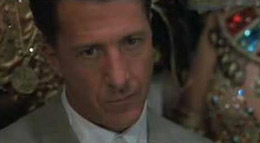 10. Raymond Babbitt from “Rain Main” (1988)
10. Raymond Babbitt from “Rain Main” (1988)
Some of you might quibble that this one should be higher due to the severe degree of O.C.D. Dustin Hoffman displayed in this film. That’s a fair argument, yet I’d point out that Raymond was autistic in a pretty serious way, and that his O.C.D. manifested itself through the pre-existing autism. To say that Raymond was O.C.D. would be similar to remarking that a person who is paralyzed from the neck down also can’t swim very well. Considering the first reality, the second is something of a foregone conclusion. That said, however, Raymond was pretty friggin’ O.C.D., and wasn’t shy about showing this off. The routines that Raymond followed were paramount to law, and could not be broken or deviated from in any way, for any reason. Whether it was the number of fish sticks to be eaten, the brand of underwear he had on, or the appearance of his favorite program, Raymond’s life revolved around orderly routine.
Dustin Hoffman is one of the greatest living actors still working in films in this author’s humble opinion, and unfortunately, the roles the man has been getting recently haven’t tapped into the rich vein of talent that lies just under Hoffman’s surface. His somewhat quiet, understated portrayal of Raymond in this picture acted as the perfect counterbalance to Tom Cruise’s brother character Charlie, whose vocal performance filled in the gaps purposefully left empty by Hoffman. Again, though Raymond’s O.C.D. was merely a symptom of a larger condition, I felt that the severity of this symptom earned Raymond at least a #10 mention.
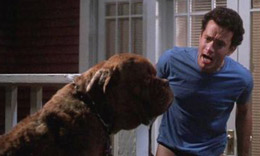 9. Det. Scott Turner from “Turner and Hooch” (1989)
9. Det. Scott Turner from “Turner and Hooch” (1989)
I know this one is a bit of a stretch since the film never explicitly stated that Tom Hanks’ Turner was O.C.D., but look at what the man was doing in this picture. Right off the bat, the movie established that Hanks’ character was a pretty tidy, organized, anal-retentive cop with an eye for detail. The credits weren’t even done rolling by the time he had undertaken his first massive cleaning project, something that involved what looked like an hour and a full roll of paper towels. As a well groomed heterosexual man, Turner really knew no equal, and the audience got to see a morning routine that would have made a 19th century English butler blush. I mean, this guy drove around with a dust-buster in his car, for Christ’s sake!
As the film went on, Turner loosened up a little as he began to deal with the joys of owning a variation of dog originally bred in the 15th century as a competitive pit fighter. On top of that, the dog, Hooch, had been living in a junkyard for his entire life and thought that his new home deserved similar treatment. Comedy ensued as the mild-mannered police officer with a fanatic eye for cleanliness and organization dealt with a slobbering demon from the second ring of hell. As for Turner’s O.C.D. though, it had to surrender some ground as the film went on, you could tell that Hanks’ character was in for the long haul with the condition. I personally enjoyed the moment where Turner went over to a woman’s house and allowed his O.C.D. to take command of the situation. This guy was so screwed in the head that he couldn’t leave a stranger’s apartment half-painted: he had to finish the job for her! Hauling out the crazy on the second date is usually not a great idea, yet when you’re Tom Hanks, you can get most things to work for you. Unlike this next guy, Turner at least had shreds of a personality to offset his condition …
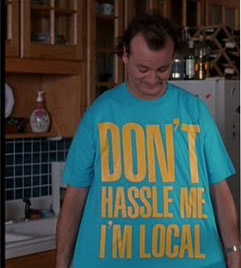 8. Bob Wiley from “What About Bob?” (1991)
8. Bob Wiley from “What About Bob?” (1991)
This film came out during Bill Murray’s professional wasteland, otherwise known to most of the world as the early to mid-1990s. I remember seeing this film as a kid, before I hit my more formative and critical teenage years, and thinking even then that this was a contrived, vapid comedy that leaned on the same joke far too much. Murray played a mentally disturbed individual named Bob Wiley, a man who didn’t like touching public surfaces and feared separation in a terrifyingly anxious way. To call Bob “clingy” would be an insult to leg-hugging two-year-olds everywhere; Bob was on a different level when it came to his separation anxiety, and it was clear early on in the film that the germ phobias and social awkwardness played into a larger mélange of issues.
When the movie started, Bob had just begun seeing a nationally recognized therapist that was big on catch phrases and gimmicks yet short on meaningful advice and therapy. Unfortunately for this psychiatrist (Richard Dreyfuss’ Dr. Leo), the pair had their first session right before the good doctor was scheduled to go on a family vacation, and the clinging neediness that consumed Bob bled over into his practitioner’s home life. By the time the film was over, Bob had blown up Dr. Leo’s cabin, married the man’s sister, and turned Leo’s son, daughter, wife, and sibling against him. This is all aside from the fact that Bob also destroyed Leo’s vacation, crashed his birthday party, and ruined a “Good Morning America” television appearance. As an O.C.D. savant, Bob certainly fit the mold for what we’re rolling with on today’s list; as a destructive presence with no concept of his insanity or the consequences of his behavior, Bob is second to none, here or otherwise.
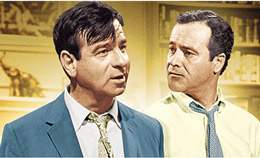 7. Felix Unger from “The Odd Couple” (1968)
7. Felix Unger from “The Odd Couple” (1968)
Poor, poor Oscar. Walter Matthau’s Oscar in “The Odd Couple” was just a normal guy trying to do right by his friend when he got sucked into a world of compulsive insanity. In the film, Jack Lemmon’s Felix, was on the skids and feeling a little suicidal after his marriage dissolved. After he showed up to Oscar’s poker game in a crying fit befitting a hand-smacked toddler, Felix was invited to move in, at least until the recently dumped crybaby got back on his feet. Within a week, however, the new roommate was so far up Oscar’s ass about the organization and cleanliness of the apartment that Felix was about two complaints away from having his nuts fed to him through a straw.
For his part, Oscar was a recently divorced bachelor living the dream. He was a gainfully employed sports writer in New York City with a group of poker buddies that included a cop (always nice to have around), and he had a pair of broads living upstairs with proclivities leaning toward slut. Once Felix moved in, the carefree existence that Oscar had enjoyed went all to hell, and a life spent not cleaning, picking things up, or giving a shit evaporated beneath a steady barrage of complaints over trash and eating habits. The madness got to critical levels when Felix caused Oscar to miss an epic triple play at a Mets game, yet didn’t crescendo until a little later on. When Oscar tried to hook up a little action with the Pigeon Sisters living upstairs, Felix found a way to ruin this as well, and pulled what would later be known the world over as “a Mikey.” Yep, Oscar had all but sealed the deal for both him and his suffering friend, yet Felix found a way to ruin the sexual encounter not just for him, but for Oscar as well. Unlike Mikey, Felix was decidedly not “so fucking money he doesn’t even know it,” which says a lot about Oscar, who did a bunch of good things for a friend despite the fact that Felix was a total pill and O.C.D. freak, where Favreau in “Swingers” was only half that bad.
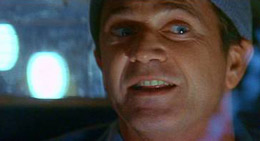 6. Jerry Fletcher from “Conspiracy Theory” (1997)
6. Jerry Fletcher from “Conspiracy Theory” (1997)
To be entirely fair, Mel Gibson‘s Jerry Fletcher was more schizophrenic and paranoid than obsessive compulsive, yet that latter affliction did indeed come as part of the crazy package. It should also be noted that “Conspiracy Theory” presented Jerry as a washed-out MK-ULTRA patient suffering the side effects of mind-control experiments, thus his tics were expected to be taken as somewhat imposed upon him. It is for this reason, and this reason only that Gibson’s character did not get a higher ranking on this list, for his compulsions were debilitating and severe. Jerry had tics that directed his movements and placement of items, not to mention his routines when entering and exiting his apartment (why do O.C.D. characters have such a passion for door locks?). Metal detectors seemed to aggravate Jerry immensely, as did any thought that somebody might tamper or interfere with his refrigerator and its contents.
This paranoid tic necessitated a lock not only for the refrigerator, but also for all the containers housing the contents within. I’m willing to give the guy a pass for his “Catcher in the Rye” compulsion, as the movie hinted that this particular tick stemmed from a deliberate government initiative to keep tabs on Jerry. That said, pretty much everything that was wrong with Jerry, including his O.C.D., could have been explained away by the shadow agency that re-wired the poor bastard’s brain. This is no excuse, however. You didn’t see Jason Bourne washing his hands 50 times a day or securing his coffee grounds with four levels of security, did you? Like this next character, though I sympathize with the circumstances that brought about his illness, I certainly wouldn’t excuse the behavior on those grounds …
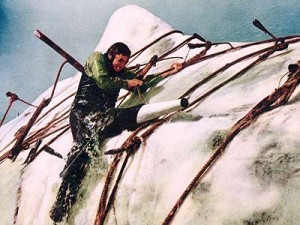 5. Captain Ahab from “Moby Dick” (1956)
5. Captain Ahab from “Moby Dick” (1956)
You have to wonder if Herman Melville maybe had a little O.C.D. in him, you know? I mean, this guy wrote prolifically and with such thorough diligence that one must assume that he was a speed freak on a Kerouacian level, or maybe suffered from some compulsive habits. Take Bartleby the Scrivener, for example. Melville wrote a sizeable love letter to a fictional character that obsessed over the minutia at the roots of the world’s most boring job. I know that people were boring way back in the 19th century, what with the lack of carnivals, television, rockets, and caffeine, yet even Bartleby’s contemporaries thought this guy was a freak. It’s said that Melville turned Bartleby the Scrivener out as a way to overcome the writer’s block developed during Moby Dick’s construction.
This makes a hell of a lot of sense if you’ve ever read both, or at the very least if you’ve seen a movie version of “Moby Dick.” “Moby Dick,” in any incarnation, usually gets the Ahab character right, for it’s hard to fuck that one up. Ahab puts the “O” in O.C.D., people. This man’s life revolved around his pursuit of the albino sperm whale known as Moby Dick, and he had no tolerance for anything that threatened that pursuit. You might think it’s a stretch to call Ahab O.C.D., but look at the evidence, even if just viewing the film adaptations. Obviously a bit of a shut-in, the crew of the Pequod didn’t even see their captain for a few days into the voyage (the guy was probably organizing his quarters and washing his hands). Ahab (played by Gregory Peck in 1956) was so dedicated to Moby Dick’s destruction that he didn’t want to feel anything but hate and frustration until his quest was complete. He threw away his favorite pipe out of disgust that he should enjoy anything without his enemy’s destruction, and consistently ignored better logic and reason until he had pursued Moby Dick to the point of his and his crew’s doom. For taking his obsession to the point of complete destruction, I had to recognize Ahab, perhaps the world’s first notable O.C.D. literary character (and consequently, one of the first in films, as well).
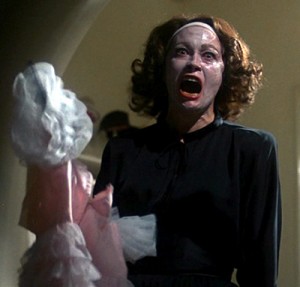 4. Joan Crawford from “Mommie Dearest” (1981)
4. Joan Crawford from “Mommie Dearest” (1981)
Let’s just say that you believe that only half the shit in “Mommie Dearest” actually happened, and discount the other half as the bitter musings of a pissed-off child living in the shadow of a much more famous and successful mother. Still, if left with the other half, you have to admit that Joan Crawford was at least six different degrees of fucked up. In the film, Joan got up at 4 a.m. to begin her fanatic cleansing ritual, which involved a face scrub that would take the paint off a Buick, and a skin and pore soak that alternated between boiling hot water and pure alcohol. It was clear early on that Joan had something of an obsession with cleanliness, and that all those interfering with her perfection quest would be consumed alive (that poor, poor maid). Probably one of the most infamous scenes in film history involved just such an encounter, when Joan wandered into her daughter’s bathroom and discovered a hint of dust. Already hacked off because of her child’s violation of the house wire-hanger policy, Joan went into O.C.D. orbit, pretty much never to return. Christina, the daughter, watched as her mother destroyed the bathroom in a fit of psychotic rage, then suffered a pretty thorough beating at the hands of a once-great movie star.
Faye Dunaway often laments that she made this film, and sometimes credits “Mommie Dearest” with ruining, or at least setting back her career. It’s hard to watch this movie and not feel a little sorry for the woman, for she clearly committed to the role, yet obviously didn’t have a director capable of reigning in and properly utilizing the production’s talent. To be fair, however, Crawford was clearly some kind of special maniac, and to properly convey the spirit of the demon that was described in the book meant that a unique brand of crazy-eye would be needed. It’s hard to imagine how a person could have made this film on a more even and plausible foundation, for O.C.D. nut jobs like this one don’t leave a lot of room for under-the-top performances.
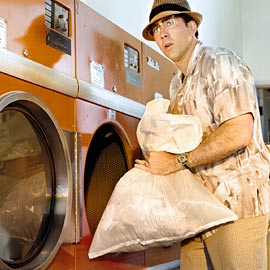 3. Roy Waller from “Matchstick Men” (2003)
3. Roy Waller from “Matchstick Men” (2003)
I go back and forth on Nicolas Cage sometimes, and can’t decide whether I tolerate and half enjoy the guy, or despise him on artistic grounds in a way that puts him in the same category as Dolph Lundgren. Over the last year or two, Cage certainly hasn’t helped his case very much, as clunkers like “The Wicker Man,” “Ghost Rider,” “Next,” “Bangkok Dangerous,” “Knowing,” and this winter’s soon-to-be savaged “Season of the Witch” have definitively demonstrated the man has no taste or class. Earlier in the decade, the guy was still taking decent roles worth a damn, however, as “Lord of War,” “Adaptation,” and “The Weather Man” redeemed costly 90s mistakes like “8mm,” “Face/Off” and “Con Air.” “Matchstick Men” was one of the agreeable efforts from Cage’s early-to-mid-2000s period that gave audiences hope that the committed, nuanced actor that had bared his soul for “Leaving Las Vegas” was still in the game to make good films, and not just finance his wild spend-heavy lifestyle.
In “Matchstick Men,” he played con man Roy working with a partner (Sam Rockwell’s Frank) on a variety of long and short cons. Though Frank was a pretty smooth operator, Roy was only reliable during an operation, and quickly descended into a variety of mental disorders once he was left alone with the rat’s nest that was his mind. Roy was agoraphobic and wildly O.C.D. up to the point that he had a hard time leaving his apartment at times. His particular compulsion involved a freakish paranoia about cleanliness and order. Some of the most entertaining moments of this film revolved around Cage scrubbing his carpet or organizing his wardrobe, though his physical tics and habit of shouting “pygmies” every time he got rattled was also ass-spanking funny. As the movie went on and Roy connected with his “daughter” (Alison Lohman) more and more, the O.C.D. seemed to recede in deference to a real emotional connection with a person. Though I’m not usually shy about spoiling films more than a year or two old, I’ll hold back on the ending of this one, for the few good films in Nicholas Cage’s recent catalog should be enjoyed while one still can.
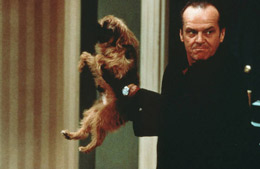 2. Melvin Udall from “As Good As It Gets” (1997)
2. Melvin Udall from “As Good As It Gets” (1997)
Melvin was the more audience-friendly version of a cinematic character suffering the same shade of neuroses that afflicted Cage’s Roy in “Matchstick Men.” Though he suffered from an equally debilitating case of O.C.D., Jack Nicholson’s Melvin in “As Good As It Gets” was not a criminal (at least not overtly), and thus got a chipper tone and a Dave Matthews Band song to smooth out his edges. Like Cage in the aforementioned film, Nicholson’s Melvin was a neurotic wolverine trapped in a man’s body. Completely isolated from the world due to his nuclear-grade personality disorder, Melvin scared away those he didn’t piss off. Keen on pointing out the deficiencies (perceived or otherwise) of every person he encountered, Melvin was cruel in a blissful way that almost suggested the man didn’t have a choice in the matter. Of course, as the film progressed, Melvin developed some patience for those around him and even discovered a little humanity that had either been lost or willfully discarded decades before. As a result, Melvin learned to feel bad about his nasty tendencies, and the audience learned to feel bad for him.
When the film began, Melvin’s routines and neurotic behavior seemed out of control and appeared to own the man. From the moment he woke up, Melvin was set in his pre-ordained movements. Feet had to hit the floor a certain number of times before finding slipper, locks had to be turned a certain number of times before leaving, hands had to be washed a very particular way before they were considered clean. The madness didn’t end in his house, either. Melvin didn’t step on cracks, he ate with his own silverware, only ordered from one person, and certainly didn’t condone small-talk. As the movie progressed, however, and Melvin began to exchange the safety of his routines for the gratification of his heart’s desires, he began making choices that contradicted his disorder’s demands. Melvin learned that he loved Helen Hunt’s Carol more than he enjoyed the stability of a life built on psychological sand. As a film character, Melvin became the go-to definition of a condition that Nicholson played perfectly to achieve the delicate balance between believably disturbed and humorously entertaining. When people think of O.C.D. these days, they often refer to Nicholson in “As Good As It Gets,” a singular achievement for an actor, especially since the condition and its association with a person largely revolved around this next man for decades, something the film that chronicled his life certainly took note of …
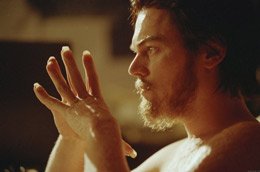 1. Howard Hughes from “The Aviator” (2004)
1. Howard Hughes from “The Aviator” (2004)
Before most people knew what O.C.D. was, or perceived of a condition even remotely similar to the actual illness, people knew about Howard Hughes and his freaky-deaky lifestyle. When he died and they found Hughes, it’s said that his corpse had long tangled hair, uncut toenails, and weighed in at a mere 90 pounds. Throughout his life, it seems as if Howard went out of his way to consistently break new ground in the field of batshit crazy. He once had an air purifier installed in his car that was more expensive than the automobile itself and took up most of the trunk. It’s pretty rare that somebody this fucked up has the means to explore their O.C.D. illness with such passionate zeal, so Hughes is an exceptional case. Martin Scorcese’s “The Aviator” touched on a lot of the quirks that were legendary even during Hughes’ lifetime. This was an industrialist and filmmaker with so much money that he could indulge his madness up to the point that he could demand that obscenely expensive experimental aircraft be re-crafted so that the plane’s contours had the correct, balanced look. This was a guy who could hole himself up in perfect seclusion free from germs, and demand that every precaution be taken to assure his perfect solitude was respected.
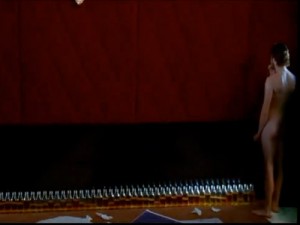 It’s known that Hughes owned a Las Vegas television station; it’s rumored that Hughes bought this station so that he could watch movies well into the night at his leisure, and since he was the owner, he could call down if he fell asleep, and make the boys down at KLAS re-queue a scene for him if he wanted. Some people, most people, try and fight their O.C.D., or at least come to terms with it in a way that allows them to function normally in a civilized society. With a net worth well into the billions, Howard Hughes didn’t HAVE to do shit, and he lived his life like a man well aware of that fact. When you have as much money as this guy, the world adjusts to your schedule and habits, and O.C.D. becomes the world’s problem, not yours. Leonardo DiCaprio did a pretty good job conveying this in “The Aviator,” and was careful to draw out a character that wasn’t a sketch, but instead a developed individual who suffered from wounds both physical and emotional. If you take Scorcese’s word for it, Hughes’ O.C.D. was a condition developed over the course of a lifetime, only to peak once the man had achieved enough influence and power to surrender his life over to the illness. A solid performance with a somewhat balanced portrayal of an often enigmatic and controversial historical figure, it’s hard to rank any person over Hughes, for as it’s often said, truth is almost always stranger than fiction.
It’s known that Hughes owned a Las Vegas television station; it’s rumored that Hughes bought this station so that he could watch movies well into the night at his leisure, and since he was the owner, he could call down if he fell asleep, and make the boys down at KLAS re-queue a scene for him if he wanted. Some people, most people, try and fight their O.C.D., or at least come to terms with it in a way that allows them to function normally in a civilized society. With a net worth well into the billions, Howard Hughes didn’t HAVE to do shit, and he lived his life like a man well aware of that fact. When you have as much money as this guy, the world adjusts to your schedule and habits, and O.C.D. becomes the world’s problem, not yours. Leonardo DiCaprio did a pretty good job conveying this in “The Aviator,” and was careful to draw out a character that wasn’t a sketch, but instead a developed individual who suffered from wounds both physical and emotional. If you take Scorcese’s word for it, Hughes’ O.C.D. was a condition developed over the course of a lifetime, only to peak once the man had achieved enough influence and power to surrender his life over to the illness. A solid performance with a somewhat balanced portrayal of an often enigmatic and controversial historical figure, it’s hard to rank any person over Hughes, for as it’s often said, truth is almost always stranger than fiction.





{ 6 comments }
I appreciate the compassion and the understanding that Warren expresses in the introduction to this blog piece. I think each movie he quotes in here has a contribution of OCD characters in them to the degree he describes. I must express one disagreement, but it is major. I don’t think What About Bob was a “contrived, vapid comedy” that signified the beginning of Bill Murray’s end-of-career comedy wasteland. Was it a brilliant comedy? No. Did it have to be? No. But I saw it when I was 17 and I said then as I do now that it was a comedy about a mentally ill person that was ahead of it’s time. I regarded Bob Wiley as a harmless, silly, out-of-control but non-threatening character who endeared himself to the audience as someone who was neurotic but not a psycho. On my page on Facebook Obsessive Compulsive Disorder/OCD Awareness https://www.facebook.com/ocd.ocd we deal with stigma and the fear of the stigma regarding mental illness all of the time. In society where the first thought regarding a mentally ill character or person tends to conjure up images of the antagonist from the “Texas Chainsaw Massacre” or “Saw” movies, What About Bob showed that a person who may seemed outwardly crazy or even disturbed or disruptive on the outside in most cases is not a harm to others. The far majority of people with OCD, for example, are not prone to any violence at all . For great example, those who have OCD and have harming obsessions, these are almost always egodystonic or “out of character” for them to even consider harming another human being. In schizophrenics, with those who develop hallucinations that drive them to harm others, if they are on proper medication to control these, they are not a threat to anyone.
For far too long we’ve expressed our fear of the mentally ill in this culture as being the guy we read in the newspaper who hacks his girlfriend and her 4 kids to death because he loses his job “and snaps”, which never actually happens all at once. Such a person had a temperament and red flags that generally led up to this occurring in most situations.
So what does this have to do with What About Bob. Well, What About Bob is the kind of movie that you can sit your kids down with and have them see the face of an innocent and disheveled mentally ill individual (with OCD symptoms) who is not out to stalk the girl next door or go into a school and shoot up a cafeteria full of elementary students, which is far better than I can say about most movies in the theatre these days. With the sensationalized media, we’ve become far too accustomed to hearing about the disaster stories from the violently mentally ill who shouldn’t have had their hands on guns, weapons, or been out and about in functional society in any way. Instead, in the far-fetched silliness of that movie, we see the face of a person who more accurately reflects the population of people who suffer from depression, ADHD, OCD, schizo, seasonal affective disorder and other types of spectrum disorders. They are well-meaning, very sensitive, harmless, yet dysfunctional people who; no matter how hard they try, find their disorders get in the way of their own lives. Some of them even have a fuzzy, laughable demeanor like Bob did in the movie and they may very well drive their family, loved one’s , and even their therapists crazy. Sure, Bob went a little overboard taking over Dr Leo Marvin’s life but that’s why it was a comedy. If Bob just pushed Dr Marvin over in the boat while fishing on Lake Winnipesaukee and that was the movie, somebody would be complaining about how boring it was. And it’s always a fun joke to think about the patient driving anal-retentive shrink crazy. That’s fun of enjoying this kind of silly slapstick. It’s innocent, it’s harmless, it’s nothing that people walk away from say, “Gees, that was a little disturbing, maybe I shouldn’t have had my 10 year old on the couch with me.” And best of all, it certainly, along with Monk, expresses a character who has OCD/mental disorders in the positive light rather than a shock-value, destructive fashion. Sometimes it’s better I think, just to relax and laugh because something is funny, rather than deem it funny and then laugh at it because it’s simply not conventional or follows an agenda.
I never did get that “Don’t Hassle Me I’m Loco” T-Shirt yet. I think I’ll order one now.
Turner and Hooch i love that movie. Tom Hanks does have a slight reseblemce of Ocd in the movie. I myself suffers Ocd.
I think all these films are valid points. OCD can stem from other mental illnesses. It annoys me when people assume OCD is all about cleaning. I have a personality disorder. Not a border line personality disorder, not even an obsessive personality disorder. I have a schizoid personality disorder. No I’m not dangerous. But I also have a debilitating OCD. And I don’t clean my house more than necessary. Mine is all about numbers and touching things a certain amount of times. And an over whellming urge to touch thinks I don’t want to touch. Things I find disgusting. I IBT know if the SPD causes the OCD or the other way around. But either way it’s a night mare
I hope You get Better
I feel compelled to comment on this Top 10 OCD list . . .
Not only are many of the characters you are labeling OCD not displaying OCD characteristics at all, I feel like your explanation of this mental disorder is so superficial and in many cases false. It seems negligent to be claiming these characters as having OCD as it leads to so much misunderstanding about an already misunderstood disorder. I would ask that you take this down as the tone of this piece comes across like you are an expert or at least somewhat knowledgable about a serious and very real mental disorder when in fact you have no idea what you are talking about. It is also so cheaply written – I have received more thoughtful writing via text from my 16 year old niece.
I think 1991 “Sleeping With the Enemy” featured a very OCD charachter Martin should have been included…
Comments on this entry are closed.